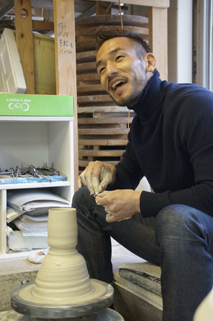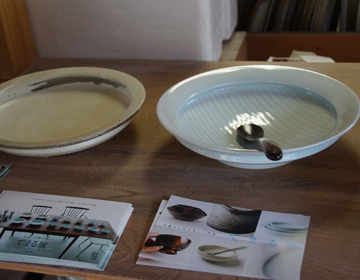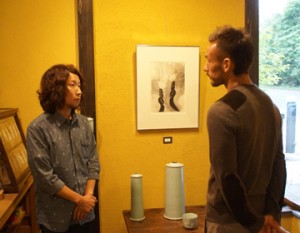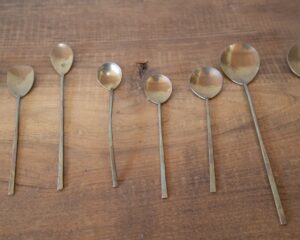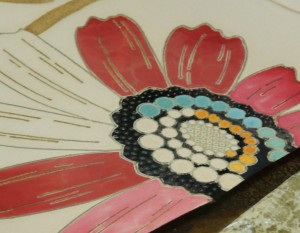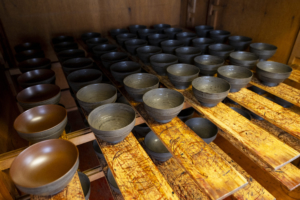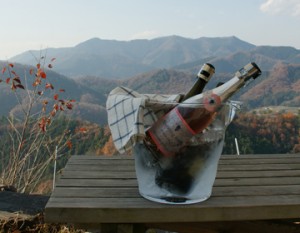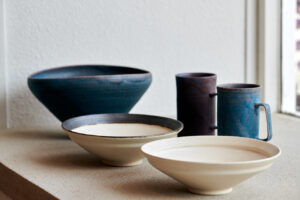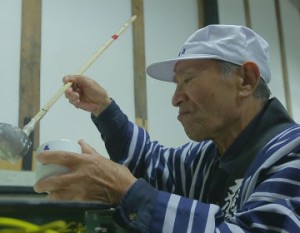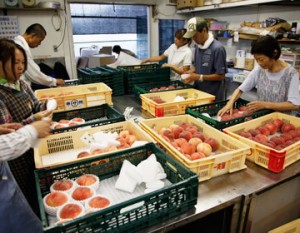Tableware uniting the creator, the purchaser and the user
What do you imagine when you hear ”nursing tableware” or ”welfare tableware”? A cup or a bowl made out of plastic, or a stainless steel spoon. ”Welfare tableware” are used not only at nursing facilities but also for in-home nursing care and many other locations.
”Te Maru” is the name of the tableware that was born as ”welfare tableware”. We visited the studio of Kazuyoshi Osawa who makes ceramic ware. Since 2008, with the collaboration of Osawa and Iwate Industrial Technology Center, they hand make the ”welfare tableware” ”Te Maru” with ceramic artists in Iwate.
Ceramics, porcelain, wooden bowls and wooden spoons. The biggest characteristic is that while it is tableware for nursing purposes, it is also ”normal tableware” which has the beauty and suits the modern life. It is calculated for elders, handicapped people and for children, but also function as simple tableware. Kazuyoshi Osawa told us about ”Te Maru”. ”I realized that there is something wrong when people think about making things by changing the form from the beginning just because it is made for care purposes. I wanted to give revisit and change that point of view.” The tableware by Te Maru won the Good Design Award in 2011, being valued for the design, and the beautiful tableware made from this point of view.
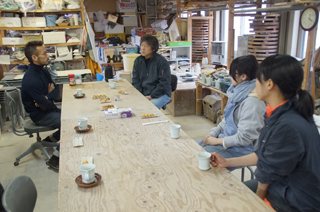
Shapes that can be made using ceramics
The ”porcelain ware by Te Maru” made by Osawa has a small feature that goes unnoticed unless you touch it. It is a ”return” on the inside of the rim. By having a small ”return”, it stops the food when being scooped from the bowl with a spoon. This ”return” is also attached in ceramic ware and wooden ware, but they prefer the more delicate feel of the porcelain ware.
The idea for this shape came from the ”begging bowl” that the monks of the ”Zen” temples carry during religious mendicancy, and the flat and wide bowl with a rim that stands out.
”When you pursue practicality, it leads you back to the classic styles. If it is a bowl to be used with a spoon, there needs to be a return. The basic idea is the same. But if I make the begging bowl as it is, it wouldn’t suit the current situation.” This is how this easy to use shape, and the original beauty of making the food tasty was born.
”Is there much demand?” asked Nakata.
”Yes there is. Since we did the exhibition, we get a lot of inquiries from handicapped people and their families.” In the future, they are planning to make tea cups that are easy to hold and easy to drink.
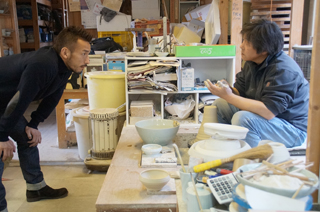
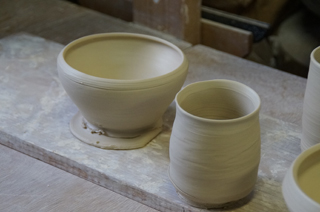
You understand when you feel it
We observed Osawa as he manipulated the wheel.
”As soon as I started porcelain, I developed an appreciation for it. I wanted to acquire the skills to be able to mass produce by hand.”
Osawa quit in the middle of University and studied ceramics at a vocational school. And after that he moved to Tobe town in Aichi where the porcelain comes from and continued his works.
”Porcelain is difficult because it sticks to your hands.” Nakata commented while experiencing making it on the potter’s wheel.
”When you are touching the clay, touch with the points on your hand to make it easier. Touch very gently.” He got the advice and made a tea cup.
Unlike the factory made inorganic porcelain, Osawa continues to make handmade porcelain one at a time. He challenges the potential of tableware while carefully observing the present.
